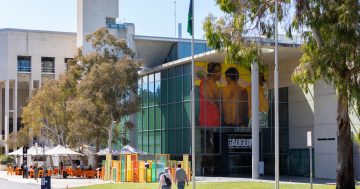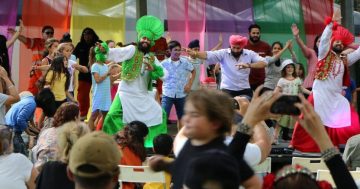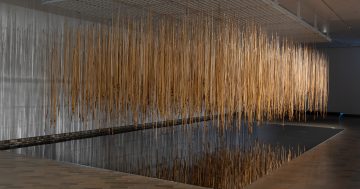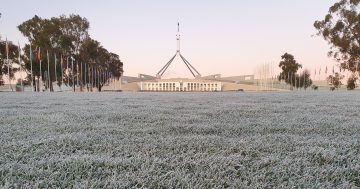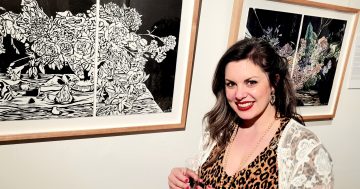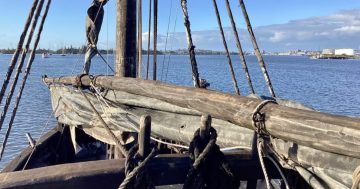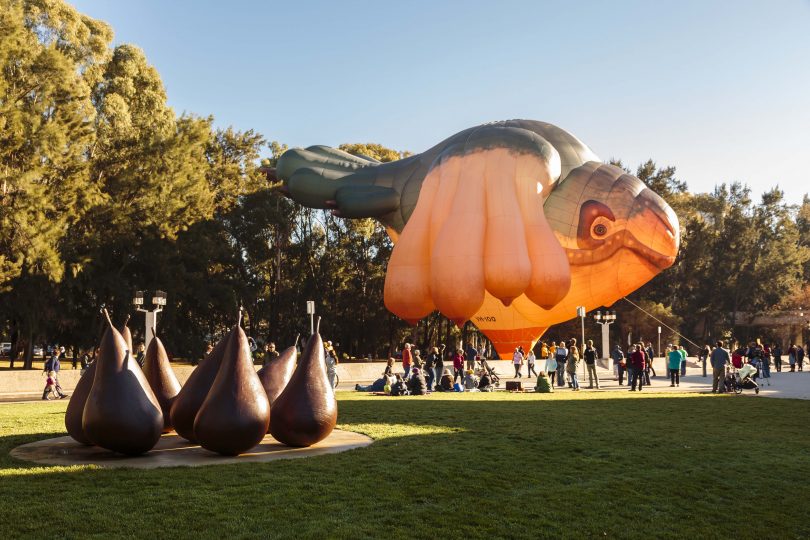
The NGA is now home to Skywhale, and a new companion work, Skywhalepapa, will take to the skies next year. Photos: NGA.
The rest of the Skywhale family will be joining mum next year in Canberra’s skies with the National Gallery of Australia unveiling Patricia Piccinini’s planned new work as part of its 2020 program launched on Wednesday.
Considered one of the most divisive and talk about artworks in Australia, the multi-breasted hot air balloon sculpture Skywhale, commissioned for the Canberra centenary in 2013, left many gobsmacked when it first flew above the city.
Now Piccinini has revealed her plans for Skywhalepapa, described as a powerful but caring masculine figure because it will also answer the question everybody has asked the artist: where are her babies?
“His massive arms gather and protect a litter of babies,” she said.
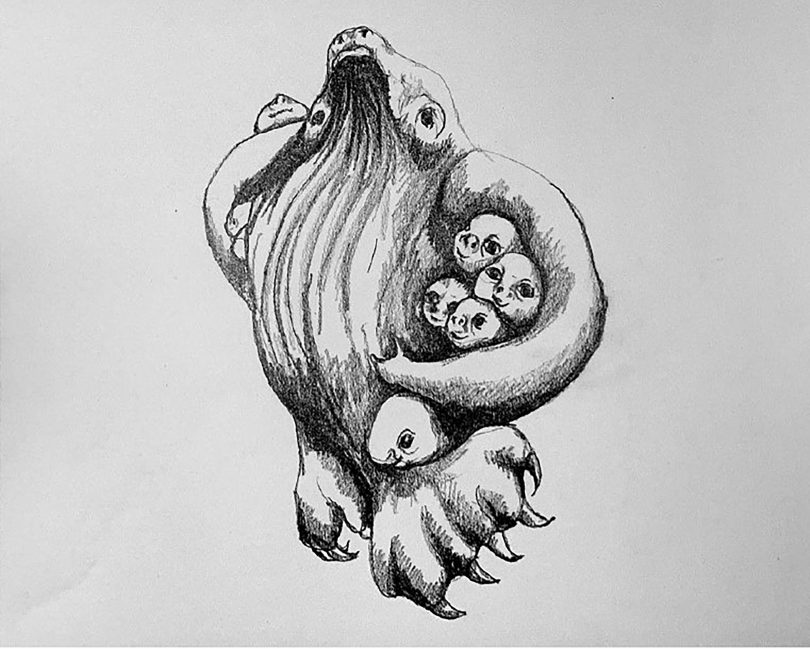
Powerful but caring: Patricia Piccinini’s sketch of Skywhalepapa.
The work suggested that caring was not limited to gender and celebrated birth, shared parenting, engaged fatherhood and the shift in a lifetime of how we understand caring, she said.
The Gallery has already acquired Skywhale, and commissioned the new work for next year when the ‘family’ will be launched from the NGA and take to the skies eight times from March to the end of May.
Piccinini said after touring the world, Skywhale had come home to Canberra and the new commission gave her the opportunity to complete the project.
NGA Director Nick Mitzevich said the Gallery would now be home to two of the most controversial and talked about works of art in Australia and the world – Skywhale and Jackson Pollock’s Blue Poles.
The Skywhale family will go on a national tour after its Canberra season.

Patricia Piccinini and NGA director Nick Mitzevich at the program launch. Photo: Michelle Kroll, Region Media.
The 2020 program will also bring one of the world’s most famous and recognisable works of art to Canberra for the first time as part of the Gallery’s major exhibition at the end of next year.
Set to be the motif for the exhibition, Botticelli to Van Gogh: Masterpieces from the National Gallery, Vincent van Gogh’s 1888 painting Sunflowers will be one of more than 60 works that chart the history of European art.
Mr Mitzevich said that for the first time the National Gallery of London was lending 60 of its most extraordinary treasures that define nearly 500 years of art-making.
“So if you haven’t had a chance to know about art this is the show for you,” he said.
“We will run through the history of art but also tantalise you with some of the most extraordinary artworks that define and changed the nature of art history.”
Mr Mitzevich said 2020 promised to be a defining year in the National Gallery’s history that pointed to where the NGA would head over the next decade.
“We will bring the best of the world’s art to Canberra, ensure the NGA continues to be a reference point for art, progress our national cultural agenda, rethinking what the history of art is all about, and introduce to the audience art that rethinks what it is to make art in the 21st century,” he said.
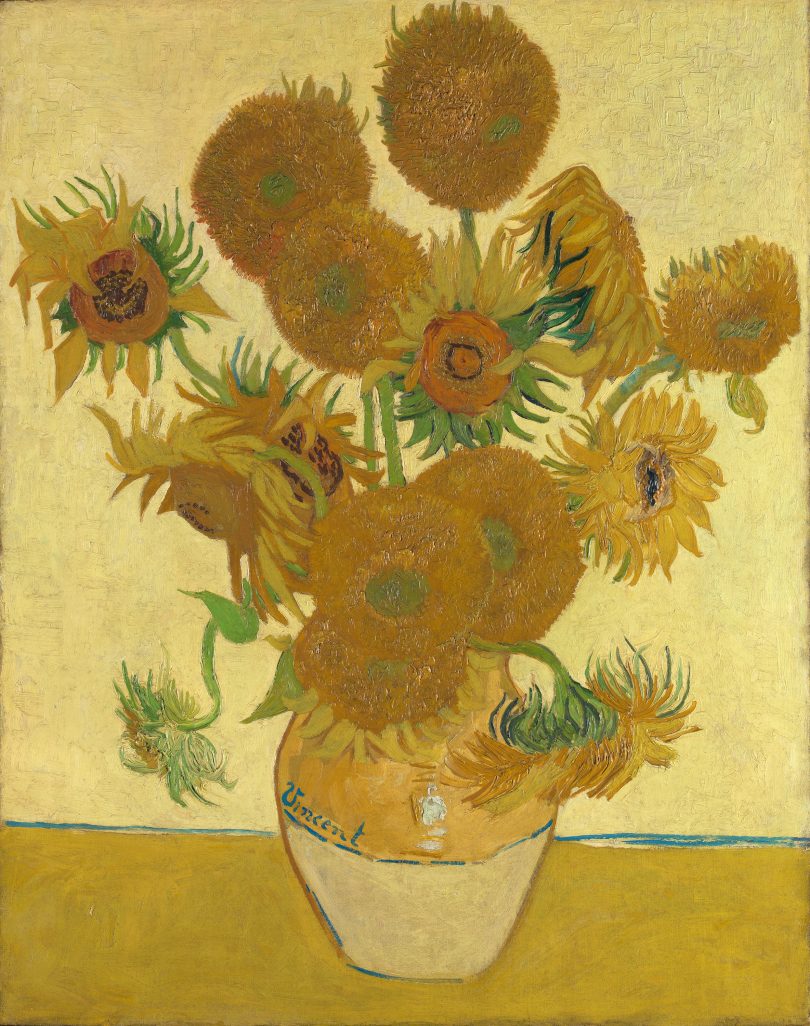
Vincent van Gogh’s Sunflowers.
Elevating the profile of women artists will be a key part of 2020 with the Know My Name project, including Australian Women Artists 1900 to Now, and The Body Electric, which Mr Mitzevich said looked at seduction and desire and would “really turn up the dial on the female gaze”.
There will also be a large-scale installation by the Tjanpi Desert Weavers, Club Ate’s digital project In Muva We Trust, in which the NGA building will be the canvas during the Enlighten Festival in March, as well as Piccinini’s Skywhalepapa.
Belonging: Stories of Australian Art looks at the first 100 years of settlement and recasts the history of 19th Century art in Australia, for the first time showing Indigenous and non-Indigenous collections together.
“Across our programming, from Know My Name to our refreshed display of the Australian art collection and beyond, the National Gallery wants to share an inclusive view of the world through the work of artists,” Mr Mitzevich said.
“The art we present explores universal themes of intimacy, belonging, colonisation and culture. These works provide an enduring connection to our past, a way to make sense of the present and a roadmap to help us create a more inclusive future.”
In September, First Peoples’ Art of Australia: from the Wesfarmers Collection and the National Gallery of Australia will go on display at the National Gallery of Singapore before beginning a tour of China the following year.
“These works from Indigenous Australian artists from the late 1800s to today show how they have maintained ancient traditions and developed new social and political identities while adapting to constant change,” Mr Mitzevich said.
The National Gallery will also introduce Art Weekends, opening late on Friday on the last weekend of every month and sharing range of artist-centred programs across the weekend catering to people of different ages, abilities and interests.
For more information visit the NGA.
Original Article published by Ian Bushnell on The RiotACT.






